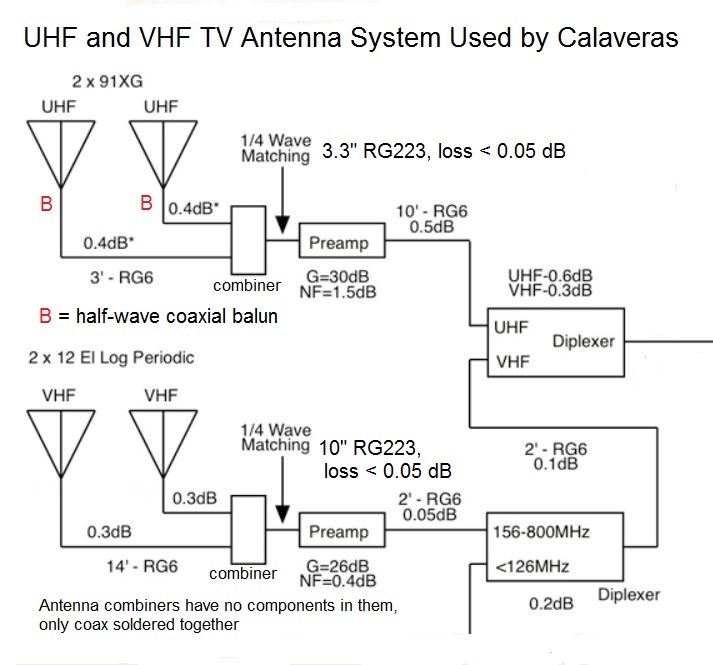Quote:
|
I'm worried that the combiner losses might be swamping any stacking gains. Can anyone recommend a ultra-low loss combiner I should try?
|
Most combiners are a splitter used in reverse as a combiner. The insertion loss is very low, average about 0.5 dB. So, the most you can gain by stacking is about 2.5 dB.
However, if the field is non-uniform and one antenna receives a weaker signal, then the gain from stacking can be much less. It's a difficult concept to grasp, but it is possible to end up with less gain from two stacked antennas than what you had with one, even if both antennas are identical, are aimed at the same azimuth, and have feedlines that are the same length.
http://www.hdtvprimer.com/ANTENNAS/merging.html
WFFF will be moving to channel 16, so you will want your antenna to have the highest gain at the low end of UHF, like the DB8E.
http://www.rabbitears.info/market.ph...&callsign=wfff
Quote:
|
Can anyone recommend a ultra-low loss combiner I should try?
|
The only way I know of to combine with a lower loss is to connect both lines together in parallel, giving an impedance of 37.5 ohms, and add a 1/4 wave matching section of 50 ohm coax which transforms the 37.5 ohms to 75 ohms. It would be a custom job. This is what Calaveras did with his two 91XG antennas.
http://www.aa6g.org/DTV/index.html
http://www.aa6g.org/DTV/ABD/Antenna_Block_Diagram.html
